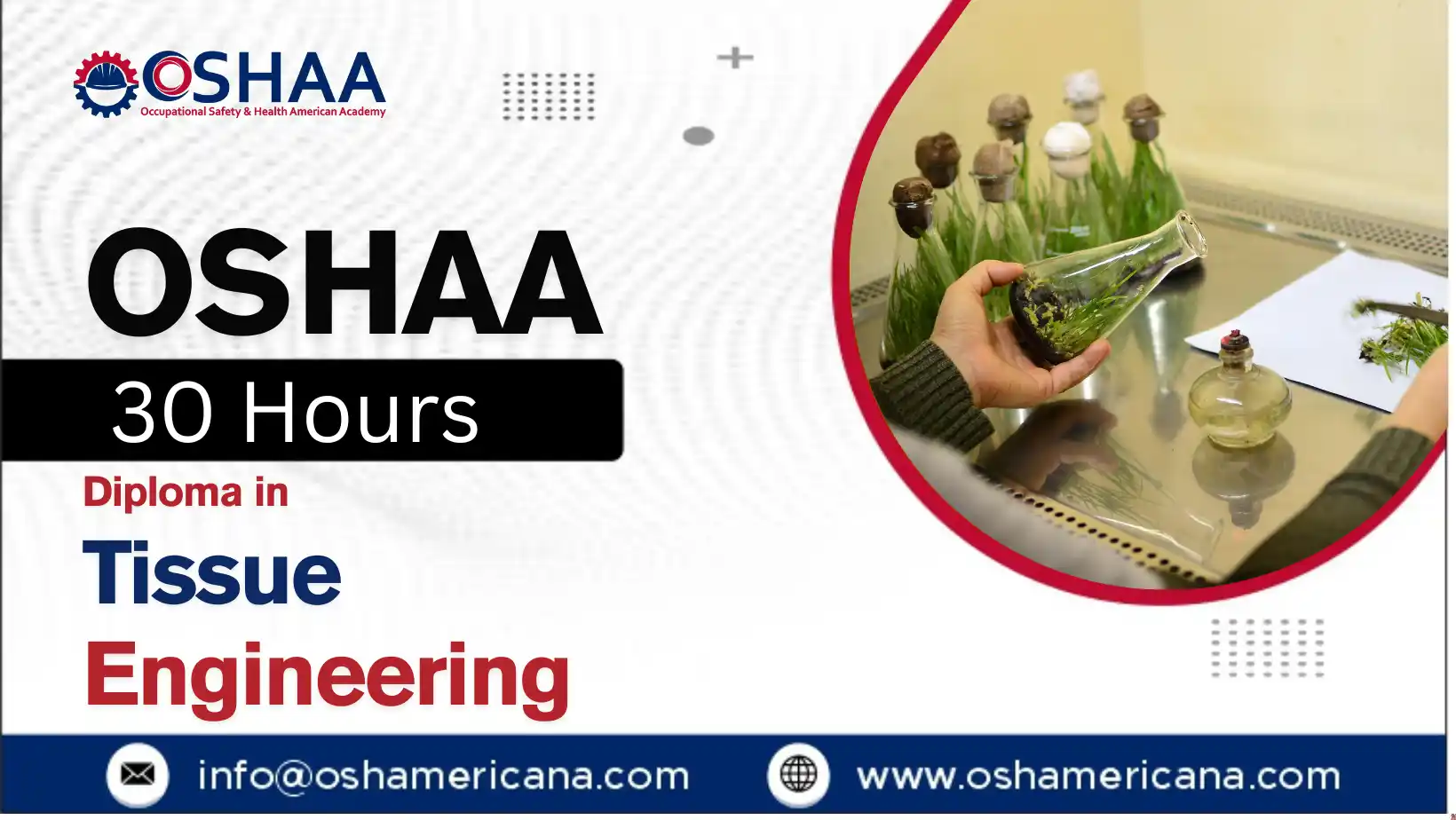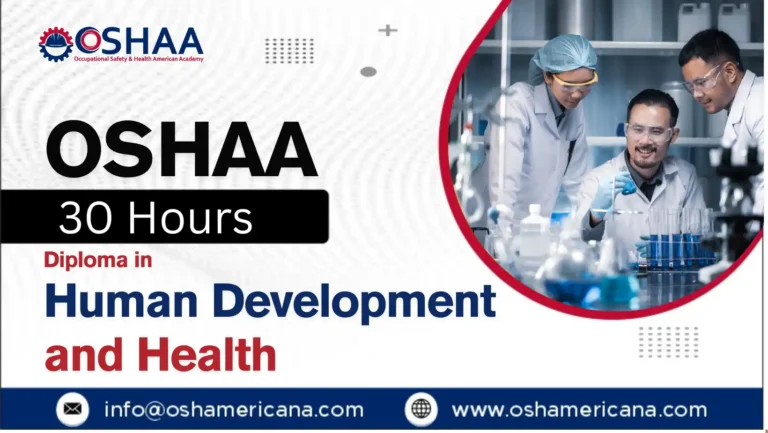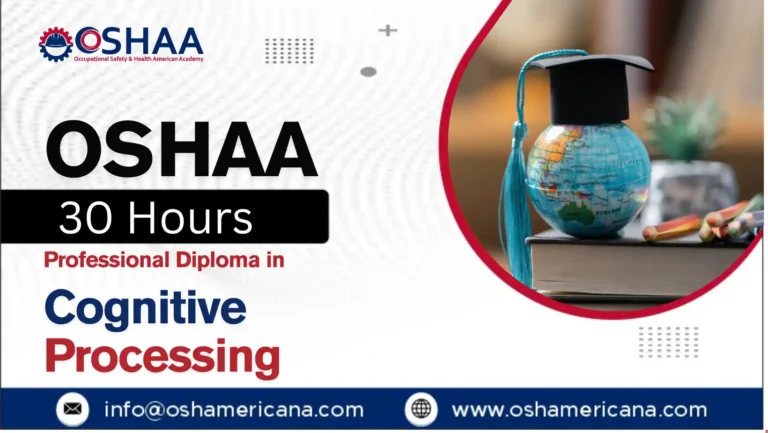The OSHAA 30-Hours Professional Diploma in Tissue Engineering is a cutting-edge training programme designed to introduce participants to the principles, practices, and applications of this transformative biomedical field. With the global rise in regenerative medicine and bioengineering solutions, this diploma offers essential insight into how living cells, biomaterials, and scaffold technologies are used to repair, replace, or regenerate damaged tissues.
This professionally structured course supports participants in building a foundational understanding of tissue engineering and its relevance across medical research, clinical practice, and therapeutic development.
Tissue engineering represents the intersection of biology, engineering, and material science. This 30-hour diploma offers participants an in-depth look at how biological systems are designed and applied in medical contexts. From understanding the cellular and molecular mechanisms of tissue repair to exploring scaffold fabrication and bioreactor design, the course covers a wide spectrum of essential knowledge.
Participants who complete this diploma may choose to advance to further qualifications in regenerative medicine, biomedical engineering, stem cell therapy, or clinical research. The course also enhances eligibility for roles in academic institutions, R&D departments, and biotech companies focused on medical innovation.
The OSHAA 30-Hours Professional Diploma in Tissue Engineering offers participants a valuable entry point into one of the most promising frontiers of modern medicine. By combining core scientific principles with real-world applications, the course provides the skills and knowledge necessary to contribute meaningfully to the development of life-changing biomedical solutions.
OSHAA 30-Hours Professional Diploma in Tissue Engineering
Study Units
Learning Outcomes
Introduction to Tissue Engineering and Regenerative Medicine (3 hours)
- Define tissue engineering and its role within regenerative medicine
- Understand the historical development and interdisciplinary nature of the field
- Identify key components of tissue engineering: cells, scaffolds, and signalling molecules
- Explore the current scope and future potential of tissue-based medical solutions
Cell Biology and Sources of Cells for Tissue Engineering (3 hours)
- Understand the basic structure and function of cells used in tissue engineering
- Identify various cell sources, including autologous, allogeneic, and xenogeneic cells
- Explore the criteria for selecting appropriate cells for different tissue types
- Learn the fundamentals of cell isolation, expansion, and maintenance
Scaffold Design and Biomaterial Selection (4 hours)
- Understand the structural and functional roles of scaffolds in tissue engineering
- Identify types of biomaterials used, including natural and synthetic polymers
- Explore properties required for biocompatibility, biodegradability, and mechanical strength
- Learn how scaffold architecture influences cell behaviour and tissue development
Principles of Cell-Scaffold Interaction (5 hours)
- Understand how cells interact with scaffolds at the molecular and cellular levels
- Explore factors affecting cell adhesion, proliferation, and differentiation
- Learn techniques to enhance cell-scaffold integration, such as surface modification
- Evaluate the influence of scaffold porosity, topography, and mechanical cues
- Examine experimental methods used to assess cell response to scaffold environments
Stem Cells and Their Role in Tissue Regeneration (6 hours)
- Define different types of stem cells: embryonic, adult, and induced pluripotent
- Understand stem cell differentiation and their potential in regenerative therapies
- Explore the advantages and limitations of stem cells in tissue repair
- Learn methods for stem cell sourcing, expansion, and lineage control
- Examine ethical considerations surrounding the use of stem cells
- Identify clinical examples where stem cell-based tissue engineering has been applied
Bioreactors and Tissue Culture Techniques (3 hours)
- Understand the purpose and design of bioreactors in supporting tissue growth
- Explore the types of bioreactors used for different tissue applications
- Learn how culture conditions such as oxygen, flow, and pressure affect tissue development
- Gain familiarity with aseptic techniques and standard practices in tissue culture
Vascularisation and Integration of Engineered Tissues (3 hours)
- Understand the importance of vascularisation for tissue survival and function
- Explore strategies for promoting blood vessel formation in engineered tissues
- Learn about host-graft integration and the challenges of immune response
- Evaluate the role of growth factors and scaffold design in supporting vascularisation
Clinical Applications and Case Studies in Tissue Repair (3 hours)
- Identify current clinical uses of tissue engineering in fields such as orthopaedics, cardiology, and dermatology
- Analyse real-world case studies illustrating successful tissue regeneration
- Understand the process of clinical translation from lab to patient care
- Explore barriers to clinical adoption, including scalability, regulation, and cost
The OSHAA 30-Hours Professional Diploma in Tissue Engineering offers a wealth of academic, professional, and practical benefits for participants aiming to explore or advance within the field of biomedical science and regenerative medicine. Through its structured curriculum, this course provides a strong foundation in both theoretical knowledge and applied techniques.
- Gain a comprehensive understanding of the principles and components of tissue engineering
- Develop essential knowledge in cell biology, scaffold design, and stem cell applications
- Acquire insights into the latest innovations in bioreactors, biomaterials, and 3D tissue culture
- Enhance practical skills applicable to laboratory work, research, and clinical settings
- Understand the clinical relevance of engineered tissues and their role in treating complex medical conditions
- Explore ethical, regulatory, and safety considerations in biomedical development
- Build competence for roles in research, biotechnology, healthcare innovation, or academic support
- Strengthen qualifications for progression into advanced study or specialised biomedical training
- Stay current with emerging trends and technologies in regenerative medicine
- Contribute to future-oriented healthcare solutions through a deeper understanding of tissue regeneration and repair
The OSHAA 30-Hours Professional Diploma in Tissue Engineering is designed for participants with an interest in the scientific and clinical foundations of regenerative medicine. It is particularly well-suited for individuals aiming to enhance their knowledge, develop relevant technical skills, or pursue career advancement in the biomedical and healthcare sectors.
- Biomedical scientists, researchers, and laboratory technicians seeking to expand their expertise in tissue-based technologies
- Medical professionals and healthcare practitioners interested in regenerative therapies and clinical innovation
- Graduates in life sciences, biotechnology, or biomedical engineering exploring specialist knowledge in tissue engineering
- Academic staff and research assistants involved in laboratory-based studies or educational delivery in biological sciences
- Participants preparing for further study in regenerative medicine, stem cell biology, or tissue regeneration
- Individuals working in pharmaceutical, medical device, or biotech industries developing cell-based therapies or tissue products
- Professionals in regulatory, ethical, or clinical trial roles looking to understand the technical and practical aspects of tissue engineering
While a scientific background is beneficial, the course is structured to be accessible for participants at various stages of their professional or academic development.







